


- Apollo 17 Lunar Module on the surface of the Moon



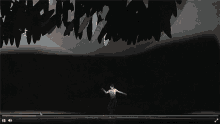
- Epithelial tissue of the bladder of a mouse looks like a planet

g



Saturn’s North Pole is also known as the Hexagon on Saturn is an almost alien like thing in space. The sides of the Hexagon are about 14.500 km long, that is 2.000 km longer than the diameter of Earth. The reason this Hexagon exists is probably hidden deep beneath the surface. Scientists think it has something to do with the turbulent storms that are happening underneath the Hexagon, making a rotating Hexagon experiencing high pressure. 🌪🌀 Do you think it has something to do with alien life? 👽 | | | De noord pool van Saturnus, ook wel bekend als de ‘Hexagon’ (zeshoek), is een alien achtig object in de ruimte. De zijkanten van de Hexagon zijn ongeveer 14.500 km lang, dat is 2.000 km langer dan de diameter van de Aarde. De reden dat de Hexagon bestaat is waarschijnlijk verborgen diep onder de oppervlakte van Saturnus. Wetenschappers denken dat het iets heeft te maken met de turbulente stormen die onder de Hexagon plaatsvinden, waardoor een onder hoge druk roterende Hexagon ontstaat. 🌪🌀 Denk jij dat dit iets te maken heeft met buitenaards leven?👽 - @spaceexplained on Instagram




Congratulations to Kelley Sedlock, OD, 2020 Ocular Photography Contest: Honorable Mention 1 Winner. #AAOptometry #linkinbio - @aaopt on Instagram

25 Shades of Pewter Color (Names, HEX, RGB, & CMYK Codes)



- Global basemap of Enceladus from Cassini (2010)




- A magnetic field shaping iron powder.

3nc4ptur3



- Celestial




- Back in July, Hubble and I both took new images of Saturn. Heres the comparison. Hubble (top) wins, but mine (bottom) is getting closer! Acquisition details in the comments.




- Mars Olympus Mons, the tallest known volcano in the solar system, has such a gradual slope that someone standing at the base couldnt see the summit because its beyond the horizon.

Gothic Charm School: pretty things



- Gorgeously processed shot of Jupiter




- Topographic Relief of Mars (and landing/cash sites of spacecraft) [OC]


bakugo


- Jupiter & moons

♡Rouge The Bat♡



- Charons warped craters and rippled plains

I Fight For The Users



- Neptune and its Great Dark Spot as seen by Voyager 2 in 1989


𓂅。゚𝐀𝐄𝐒𝐓𝐇𝐄𝐓𝐈𝐂 𓋜 ᤷ ៶ ៸ 𝗉𝗂𝗇𝗍𝖾𝗋𝖾𝗌𝗍 ©𝗏𝖾𝖾𝗀𝖺𝗌𝗍𝖺𝗋


- A family photograph left on the surface of the moon by one of the Apollo 16 astronauts in April 1972. Credit...NASA




- Europa: Jupiters Moon




- The Moon and the CM Odissey from the LEM, Apollo 13

Jupiters Circle (2015 Image) comic books published within the past 2 years


- My first photo of Copernicus. [OC]


- Earth from NASAs Juno spacecraft as it does a fly by to get a gravitational power-boost en route to Jupiter. [937×960]


- Technological Advancement 🔭🔭


- Hear me out the blue things in the last photo are the same as the other three, those are lichens/mushrooms on mars look closely the soil is red and oxidized but covered in a field of blue spherules much like the ones in the other photos size is 5-7mm


- What Saturn looks like through a 6 inch telescope(May, 2020)


- Constellation

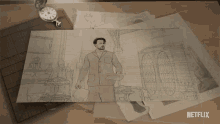
- Hubble space telescope


- Took this cool looking shot on Laythe since my crew arent coming back soon


A new portrait of Jupiters storms 🌀 406 million miles from Earth, Jupiter is captured by our @NASAHubble Space Telescope, with the Great Red Spot visible as it plows through clouds. Researchers say the Great Red Spot measures about 9,800 miles across, big enough to swallow the Earth. A unique and exciting detail of Hubble’s snapshot appears at mid-northern latitudes: a bright, white, stretched-out storm traveling around the planet at 350 mph (560 km/h). While it’s normal for storms to pop up in this region every six years or so, the timing of Hubbles observations on Aug. 25, 2020, allowed for a perfect showing of the structure. Visible on the far left is Jupiter’s icy moon Europa. Credit: NASA, @EuropeanSpaceAgency, STScI, A. Simon (Goddard Space Flight Center), M.H. Wong (University of California, Berkeley), and the OPAL team #NASA #Hubble #Jupiter #Storms #Europa #Planets - @nasa on Instagram


- Looks like there is a trail on Phobos [2600 × 2151]


- Voyager 1 mosaic of Jupiters northern hemisphere


- Jupiter Perijove 17 from the NASA Juno spacecraft True v Enhnaced — Merry Xmas


- Moon: Apollo 11 landing site [OC]


- First X-Ray colored image thanks to MARS Spectral X-Ray Scanner


- Mars apparent diameter change - March to July 2020 [OC]


- Saturns north pole hexagon. [991x812]

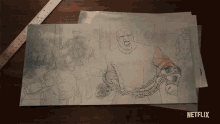
- This is Jupiter


- Earth Rocks!


It’s International #ObserveTheMoon Night! Sometimes studying Earth gives us a spectacular view of our neighbor in space. In the first image, our EPIC camera on @noaasatellites’ DSCOVR captured the Moon photobombing Earth in 2015. In the second, Operation #IceBridge saw the Moon over the Antarctic landscape. In the third, astronauts on the @iss watched the Moon rising over the limb of Earth. . . . . #Moon #Earth #space #satellite #NASA #astronaut - @nasaearth on Instagram


- Space Facts

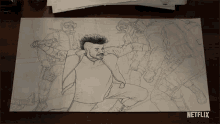
- iPhone 7 Wallpaper


- HIV virus budding from the surface of a white blood cell


- Not even out of curiosity


- My first image of the sun using my brand new Coronado PST and DMK 21 camera


- Two massive storms saying hi.


- Aliens


- The universe


- This was one of my first attempts at photographing saturn. Unfortunately its quite fuzzy but Im still proud of it!


Incredible image, witch come of the account @spacearts_la #planet #astronomy #galaxy #telescope #universe #space #spacelovers - @sky_dreamer.astronomy on Instagram


- NASAs Dawn spacecraft sadly ran out of fuel last week. One of its greatest discoveries was that there are volcanoes on the dwarf planet Ceres- what look like lights are in fact deposits of salt left behind by volcanoes that erupt muddy water instead of lava


- Kalaxian Crystals?


- Holy fuck

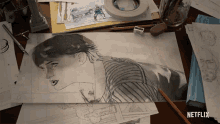
- moons of Jupiter essay


Did scientists just find life on Venus?! In a paper released this week in Nature Astronomy, astronomer Jane Greaves at Cardiff University and an international team of scientists announced the presence of phosphine in Venus’s atmosphere. Phosphine is considered a “biosignature”—a molecule strongly associated with the chemistry of life that has few non-life methods of production, particularly on a rocky planet like Venus. The team used two observatories—the James Clerk Maxwell Telescope (JCMT) in Hawaii and the Atacama Large Millimeter Array (ALMA) in Chile—to verify their detection. The implications are massive: there could be life in Venus’ atmosphere. This may sound implausible, but there are regions of Venus’ upper atmosphere that are remarkably temperate and relatively hospitable. For decades there has been a hypothesis that, against the odds, microbial life forms could be floating around the planet. This detection is one piece of evidence in support of that hypothesis, but we are far from proving the existence of life. Read our full analysis at planetary.org/articles - @planetarysociety on Instagram


- i guess that this must be the place

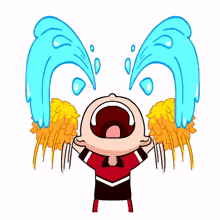
- An abundance of boulders litters the surface asteroid 101955 Bennu in this dramatic close-up from the OSIRIS-REx spacecraft.


- Welcome to Comet 67P, captured by Rosetta spacecraft


- Two days ago the ISS passed in front of the Sun near my place, video link in the comments.

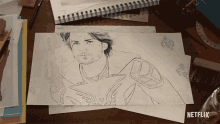
Phosphine found in Venus atmosphere! Phosphine is considered a biomarker which are natural products that can be traced to a particular biological origin. This is VERY exciting because we will get to explore how the Phosphine originated and learn more about the mysteries of the Universe. This is also a gentle reminder that we are currently living in the geocentric model of the extraterrestrial question. This too will be superseded. In our favor and, likely, in our lifetime. Exciting times! #Venus - @tsoukalos on Instagram


- My attempt at a gas giant

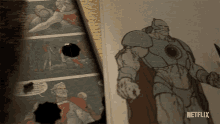
- Eta Carinaes great eruption [738 × 726]


- Uranus through a telescope


- This amazing image just isnt getting the eyeballs it deserves over at r/spaceflight


- The Sun on 2019-01-03, with Sunspot 2732 and a nice prominence.


- I maxed the s#!t out of the phones zoom.


Racing stripes: Jupiter is huge, but makes a full rotation in just 10 hours. This creates powerful jet streams that divide its clouds into distinctive bands, as seen in this striking JunoCam image processed by citizen scientist David Marriott. See details at the link in our bio. #NASA #space #nature #Jupiter #Juno #JunoCam #planets - @nasajuno on Instagram


- ITAP inside of a cannabis trichome (the sticky, hairlike protrusions on the leaf containing its many active chemicals) (photomicroscopy)


- 1 - Near future


- Perhaps this COVID lockdown is a dooms day scenario so people can spend their final moments with loved ones.


- The underside of Jupiter- true color image


- Ive been taking an image of Saturn every year since I got my first telescope back in 2009.


- Thats the rover Curiosity taken from space.Every time I look this image, it makes me feel proud about the advancements humankind has made in spacetech.

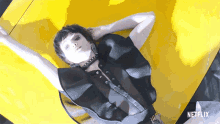
- Mars continues to appear larger and larger in the night sky. Here is a sequence of images Ive taken over the last four months showing its progress [OC]


- Jupiter & moons


- Pluto in true color


- Infrared Saturn Clouds


- medicinal chemistry


- Agates


- FACTS ABOUT SPACE.


- Curiosity Rover landing captured by the Mars Reconnaissance Orbiter


- Size change of Jupiter as viewed from Earth less than a month apart, as we get further away from it.


- Asteroid Ruygu as seen by Hayabusa 2

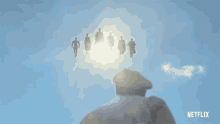
- Heat Shock Protein 27 (HSP27)


- Latest picture of Pluto


- The moon as photographed by the Apollo 13 crew from their Lunar Module life boat as they passed by it. The shut-down Command Module is visible out the overhead rendezvous window.


- The size of the planets and stars in our solar system with perspective

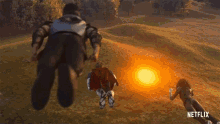
- A Volcanic Eruption in Space


- Plutos Chaos Region


- Terrain of Pluto.


- analysis

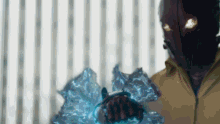
- Jupiter’s South Pole - composite image from Juno spacecraft


- Jupiter, courtesy of NASA Juno spacecraft


- Jupiter (Planet)


- The smallest Moon in our solar system, Deimos, has a radius of 3.8 Miles


- Ultima Thule, the furthest object ever visited by a space probe.


- Titans south polar vortex as seen by Cassini in June 2012

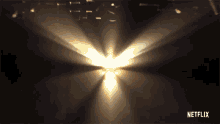
Jupiter 😍 ————————————- ⠀ Credits image @nasa ⠀ ⠀ ⠀ ⠀ ⠀ ⠀ #roscosmos #nasa #nasa🚀 #spacex #space #spacetime #космонавт #роскосмос #iss #esa #spacestation #МКС #roscosmosofficial #moon #mars #космос #sun #earth #beautiful #austronaut #cosmonaut #млечныйпуть🌌 #galaxy #photography #мечта #рекомендации #astrophoto #hubble #rocket #красиво - @universe_of_outer_space on Instagram


- Methane clouds on Titan.


- I spent almost a year of learning and saving for better equipment and my results are beginning to show. Here are the two most commonly imaged planets when I started the hobby compared with today. These were all taken with the same telescope.


- Juno has been monitoring the gas giant for roughly three years, and sweeps close to the planet every 53 days. During its latest flyby on September 12, it captured images of the solar eclipse. Thanks to software engineer Kevin Gill of NASAs Jet Propulsion Laboratory, who processed the image.


- Earth compared to its water and air


- In 1994, fragments of the comet Shoemakers - Levy 9 crashed into Jupiter (in the picture). It is the first space telescope image of the collision of two bodies in space. Besides the fact that it looks amazing, the pictures provided a new understanding of the composition of the atmosphere of Jupiter.


- I imaged all 6 lunar landing sites with my 8 Schmidt-Cassegrain scope, using a 3x TeleVue barlow and a ZWO ASI 224MC camera (captured a few thousand frames per site, stacked 10% of frames with AS!2 and post-processed in Registax). For an idea of image scale, Armstrong crater is 4.6km across).

- Planeta Ceres (planeta anão)

- Yesterday (02/16), the ESA released a very detailed image of comet 67p on its flyby at an altitude of 8.7 km. You would be able to see an astronaut at this level.

- Jupiter & moons

- Saturn (Planet)

- Space Images

- Triton is the largest natural satellite of the planet Neptune, and the first Neptunian moon to be discovered

- Weve come a long way

- ESAs Schiaparelli Lander could land as close as 6 miles from NASAs Opportunity Rover when it lands on Mars on October 19th

- My first planetary system map. Will add more over time

- Round-horizon selfie of Curiosity [6000 x 6000]

- Phobos, Moon of Mars

- Kevin Gills visualization of Mars with Earth-like oceans and life [1024x1024]

- The Negi Maru arrives at Ovok, the small egg-shaped moon of Sarnus (the lander will be reused for the high-gravity moon of Slate)

- Recently, reasearchers find cell-free mitochondria for the first time in the history of science. They live in healthy human’s body, but their function is yet unclear.

- Moon: Mare Humorum [OC]

- A magnificent close up of Jupiter, taken by Juno.

- How big do planets appear as seen from each other

- Jupiters Swirling South Pole.

- Saturns largest Moon, Titan. Credit: NASA/JPL-Caltech

- All About The Earth & Space

- Ceres Mysterious Spots in Stunning Resolution- Click to Zoom!

- Stereograph of Ultima Thule from NASA livestream

- aurora ryder.

- Moon: Copernicus and Hortensius domes [OC]

- Mas as seen by the Viking 1 orbiter in June 1976 [1205 x 1349]

- Earth to scale if it replaced Io on its orbit around Jupiter - (NASA, JPL-Caltech - processing Alexis Tranchandon)

- Great Red Spot closeup (contrast-enhanced)

- Astronomy/Astrophysics

- Battle-scarred Jupiter after Shoemaker–Levy 9‘s many comet bodies slammed into the planet. The impacts released an energy equivalent to 6,000,000 megatons of TNT (600 times the worlds nuclear arsenal)

- Mars before, during and after opposition.

- Europa with water vapor detected by Hubble (2012)

Date image was taken: 8/26/2020⠀ ⠀ Image Title: Syrtis Major and Hellas Planitia on Planet Mars⠀ ⠀ Image Description and Details : Image of planet Mars taken on August 26, 2020 through a Maksutov Rumak 255mm F20 telescope + 2x Barlow lens (F40, 10.000mm focal lenght). Exposure 0220, 1500/4200 frames stacked at 30 fps on USB 2.0. Processed with Autostakkert, Registax, Fitswork, Photoshop.⠀ ⠀ Your Website or Facebook Profile: http://www.astronomicalangrenus.it⠀ ⠀ Copyright Information: Francesco Badalotti⠀ AAPOD2 Title: MARS⠀ AAPOD2 Page Link: https://www.aapod2.com/blog/mars-2020 - @aapod.2 on Instagram

- galaxy

It’s finally release day! “Edge Of Time” my 3 track ep on the magnificent @steyoyoke is now available for streaming / download. Each track holds a special place for me, months of fine tuning went into the final results, do let me know what you think of them. Link in the bio. #steyoyoke #browncoat #EdgeOfTime #EP #etherealtechno #steyoyokerecordings #techno #melodictechno - @browncoatmusic on Instagram

- Plutos Dark Areas

- The Apollo landing mirror left on the Moon on July 21, 1969 by the crew of Apollo 11 to measure the distance between surfaces of Earth and the Moon using laser ranging

- Beautiful Space

- Jupiters Twilight Zone [1440x1319]

- Moon: Mare Nubium with Rupes Recta [OC]

- Rosetta Mission

- Bio inhabited Sol, 2090

- Astronomy

- one of the clearest pictures of neptune

- A Robots Shadow on Asteroid Itokawa

Smelly gas = life on Venus? 👽🪐 In a surprising twist, scientists at @mitpics @cardiffuni , and elsewhere have observed what may be signs of life in the clouds of our other, even closer planetary neighbor, Venus. While they have not found direct evidence of living organisms there, if their observation is indeed associated with life, it must be some sort of “aerial” life-form in Venus’ clouds — the only habitable portion of what is otherwise a scorched and inhospitable world. “This means either this is life, or it’s some sort of physical or chemical process that we do not expect to happen on rocky planets,” adds co-author and @mit_eaps Research Scientist Janusz Petkowski. Read more and watch the video: https://news.mit.edu/2020/life-venus-phosphine-0914 #venus #venusnews #life #habitable #habitableplanets #lifeonvenus #lifeinspace #space #et #extraterrestrial #planet #planets #spacescience #earthscience #planetaryscience #planetary #phosphorus #gas #discovery #science #mit #cardiff #massachusettsinstituteoftechnology - @mitscience on Instagram

The human species is going into lock-down mode. Self-quarantine for a species that is magic and hyper destructive. Let’s use this moment to recalibrate, to reflect and to become aware of our fragility, of beauty and of the time we have left to change the way we live on this wondersome planet, this gift of a home. Let’s use this moment to develop a Masterplan for the massive challenges we created: Climate Change, Plastic Pollution, Agricultural Run-off, Overfishing. It’s a great moment to reset, to end the ‘Toxic Age’ and to drive what we at @parley.tv call the ‘Material Revolution’. Individually and professionally. For the Oceans, Climate and Life. Thank you planet for the warning shot. And the patience you are having with us. - @cyrillgutsch on Instagram

- Artists impression of the ancient lakes rivers and seas of Mars

- Ceres’ Solitary Mountain Ahuna Mons (Topographical Map)

- The storm om saturn (the Rose of saturn)

- Out of Our Atmospheres

- Pluto’s tiny moons are stranger than imagined.

- Iss and the Moon

- Phobos silhouetted against the surface of mars

- Sunlight reflecting off oceans of methane on Saturns moon, Titan

- The names of these Moon features cataloged by the Chinese Space Program

- IT CAME FROM OUTER SPACE

- Landslide on comet 67P/Churyumov-Gerasimenko? How can this be in a microgravity environment?

- This is Titan. Looks like from a Sci-Fi movie

- Starfleet ships

- Aurorae on Jupiter.

In a surprising twist, scientists at MIT, @cardiffuni, and elsewhere have observed what may be signs of life in the clouds of closer planetary neighbor, Venus. #VenusNews Read about the research, see link in profile. #astronomy #astrophysics #PlanetaryScience #research #astronomy #space #exoplanets #life @mit_eaps @mitscience - @mitpics on Instagram

- Pluto, the Dwarf Planet

- The big black thing is the biggest black hole ever discovered, whilw the tiny dot in the middle is our solar system for comparison.

- Saturns moon Helene, a trojan moon of Dione (co-orbital in L-4 point), as seen by Cassini in approximate natural color. Data taken in June 2011.

- Plutos heart just got bigger - NASA released highest resolution images of Pluto to date

- Any Selenite in Australia sick of describing how big back home is? One picture tells a thousand words.

- Astrophotography

- astrological wonders

- Rocket ride

- This image from NASAs Juno spacecraft provides a never-before-seen perspective on Jupiters south pole. The JunoCam instrument acquired the view when the spacecraft was about 58,700 miles (94,500 kilometers) above the polar region. [OS][1200x800]

- March of the moons: Hubble Space Telescope captured a rare look at three of Jupiters largest moons parading across Jupiter in 2015. Credit: NASA, ESA, and the Hubble Heritage Team

- Landing on Hale, the smallest moon of Sarnus (Outer Planets Mod) - Its even smaller than Gilly!

Thermal Image of #VikramLander #Chandrayaan2 #VikramLanderFound #ISRO #chandrayaan2landing🌘🚀🇮🇳 - @ganeshrane_26 on Instagram

- I created a map of Jupiter from my backyard

Jupiters volcanically active moon Io casts its shadow on the planet in this dramatic image from NASAs Juno spacecraft. As with solar eclipses on the Earth, within the dark circle racing across Jupiters cloud tops one would witness a full solar eclipse as Io passes in front of the Sun. Such events occur frequently on Jupiter because it is a large planet with many moons. In addition, unlike most other planets in our solar system, Jupiters axis is not highly tilted relative to its orbit, so the Sun never strays far from Jupiters equatorial plane (+/- 3 degrees). This means Jupiters moons regularly cast their shadows on the planet throughout its year. Image Credit: NASA/JPL-Caltech/SwRI/MSSS/Kevin M. Gill (CC-BY) #NASA #MarshallSpaceFlightCenter #MSFC #Marshall #jpl #jetpropulsionlaboratory #nasamarshall #MSFC #solarsystem #juno #jupiter #space #astronomy #nasajuno #nasamarshallspaceflightcenter - @nasa_marshall on Instagram

- A crescent Earth as seen from the unmanned Apollo 4 spacecraft, 1967

- Beautiful Other Worlds

- Apollo 8: Christmas At The Moon

- New image from HiRISE shows detail down to the shadow the Curiosity rover casts on the surface of Mars.

- Happy 50th Birthday to Earthrise, - one of the most famous images ever taken; photographed by Astronaut Bill Anders aboard Apollo 8, Dec. 24, 1968. cr: NASA

- Astronomy

- See a jet stream speeding through Jupiter’s atmosphere in this new view taken by NASA’s Juno spacecraft.

- Rendezvous over Mars [CG]

– Repost from @royalastronomicalsocietycanada – Check the linkinbio to register for the Astrophotography live stream! CONTEST ANNOUNCEMENT! Take a photo of something up in space* and post on Instagram or Twitter for the chance to win a copy of the current issue of SkyNews, and Nightwatch, an amazing introductory astronomy book! Tag @astrogeoguy, @royalastronomicalsocietycanada and use the hashtag #astronomytime to enter. Winner will be selected at random, so dont worry about your astrophotography skills! Contest closes Tuesday at 10am EDT, winner will be announced at 3:30pm EDT during the Astrophotography livestream. *object must be at low Earth orbit or higher (e.g. the ISS, satellites, stars, the Moon, Venus) ––––– Sharing your astro shots of the Toronto night sky! Original image by 📸: @nasa Tag + Follow ⇢ @urbanastrotoronto Hashtag ⇢ #UrbanAstroTO - @urbanastrotoronto on Instagram

- latest news: unhealthy amounts of red spooking astronomers worldwide

- Composite view of Jupiters Southern Hemisphere using imagery from Junos Perijove 20 on May 29th.

- Uranus

- APOLLO 11

Освещённость кратера Пифагор Максимальная глубина кратера: 5.250 м Диаметр: 144,6 км Образование кратера: эратосфенский период (Эратосфенский период - период геологической истории Луны, начавшийся 3,2 млрд лет назад и продолжавшийся 2,1 млрд. лет. Этот период отмечен затуханием вулканической деятельности на Луне, наряду со снижением частоты ударных событий до современного уровня) #moon #luna #moonshot #waxingcrescent #moonphases #moonlovers #moon_awards #moon_of_the_day #total_moon #nikon #nikonrussia #nikonp900 #sky #space #astronomy #astrophotography #astro_photography_ #universetoday #yesesa #mvspecialphotography #nature_brilliance #nightphotography - @1960isphoto on Instagram

Aula prática😍 Células no microscópio 🔬@naturologia.univille - @tabismimos on Instagram

- The first photo of Earth from the Moon taken by a human (colorized)

- What Other Worlds Have We Landed On?

- Astronomy

- Jupiters moon europa

- Saturns moon Titan

- Jupiter and Europa seen by the Voyager-1 spacecraft. © NASA / JPL-Caltech / Kevin M. Gill [Xpost from r/cosmicporn]

- Jupiter is an art masterpiece

- NASAs New Satellite Mission For 2022 To Asteroid Belt: They Believe That Psyche Asteroid Could Be A Failed Planet. May Also Be How Earth First Started!

Beauty in motion: Here’s another striking view from my latest close pass by Jupiter. The giant planet has no solid surface in the same way Earth does. Data collected during this mission indicate that some of the giant planet’s winds run deeper and last longer than similar atmospheric processes on Earth. See more details at the link in my bio. Image processing by Kevin M. Gill. #NASA #space #science #nature #Jupiter #Juno #JunoCam #planets - @nasajuno on Instagram

- STUNNING VORTICES OF JUPITERS SOUTH POLE

- The Geysers of Triton.

- Cassini Snapshot of Saturns North Polar Hexagon and Vortex [427x247]

- Astronomy/Astrophysics

- galaxy

- Sunspot 2645 on 2 April, 2017

- Astre

- The First Preliminary Map of Asteroid Ryugu!

- Apollo 12 landing site as seen by a Japanese probe.

- Reconstructed and edited a picture of Jupiter taken from the JUNO mission of NASA

- Shadow and Glory of Hyabusa2 Space Probe On Asteroid Ryugu [512x512]

- I took this photo a couple weeks ago that shows different layers of the sun

- Our Star, the Sun

- Thats Phobos, Mars moon. Imagine having a satellite that actually lives upto its name.

- Picture of Jupiter taken by Juno space probe. Looks so fucking cool.

- False Color Image of the Moon showing compositional variations

- Io casts its shadow on Jupiter

- Earthrise, William Anders, Color NASA camera, 24 Dec 1968

- Apollo moon missions

- Amazing views of Saturns North Pole.

- Science

- galaxy

- Jupiters moon Io casts its shadow on Jupiter

- Jupiter, alone in the darkness

- I made a 3D image of Saturn by taking pics about a year apart. Relax your eyes until the images merge to make the image 3D. [OC]

- Current State of my Map of Phobos in 2140

#TriviaTuesday ____________ is when a planet or moon in our solar system is on the opposite side of the Sun from the Earth, making it appear fully luminated by the Sun and brighter than when it’s in any other position. Photo Credit: NASA, ESA, the Hubble Heritage Team (STScI/AURA), J. Bell (ASU), and M. Wolff (Space Science Institute) - @bishopsciencefl on Instagram

- A new JunoCam image highlights a massive rotating storm in Jupiter’s southern hemisphere

- Saturn’s sponge-like moon Hyperion

- PsBattle: The underside of Jupiter

- Miranda, moon of Uranus, during the January 24 1986 flyby of Voyager 2 [OC] [1834x1824]

Amazing shot of Saturn & our Moon 🌚😍. On the morning of May 14, 2014, the dance of the solar system brought together two unlikely partners: our Moon, and Saturn. As the Moon orbits the Earth, it makes a circle in the sky every month, and as Saturn orbits the Sun it too follows a circular but different path around our sky. . . ✔For more ️, tag a friends 👥, like the post🖤 & Share with Spacelovers . . ➡️Follow:@isro.official.in ➡️Follow:@isro.official.in . . 🔷Hastags: 👇👇 #Galaxies #Planet #Planets #Moon #Galaxy #NASA#Spacex #Hubble #Space #Science #Scientist #Sciences#Astronomy #Universe #Galaxiesways #Telescope#Cosmos #Nebula #Supernova #Blackhole #Star #Stars#Astrology #Physics #Astronaut #Astrophysics#Astronomer #Elonmusk #Nature #Memes - @isro.official.in on Instagram

- Forbidden Fried Egg

- *cosmic view*

- Astronomy

- 3DCG data

- Pac man

- Rocket ride

@wiels_brussels hosts the exhibition Risquons tout, with the participation of precursor of performance art #EstherFerrer. Until 10th January 2021. - @spainculturebe on Instagram

- Rosettas last image

- Astrophotography

- Io Transit - #397 ASTRO PHOTO OF THE DAY featuring @boundless_valley #astrophotographyindia - -- - CATEGORY: TRACKED-S - I always prefer waking up early when these giants are high above, rather than staying up late night. Kinda feel fresh capturing them in the pre-dawn hours. Here, you can see the transit of Jupiter’s moon ‘io’ and its shadow being cast on the planet. Such an incredible view !! This here, is a stack of 3000 frames with 1.5x barlow. Cam: Neximage 5 attached to Nexstar 127SLT Maksutov. Have a lovely eve, people. 😊🔭🌌 - *READ ME* admin: These are exclusive hashtags used by us to tag our featured photos inorder to index contents within the photos. How do you make use of these hashtags? Just input any hashtag in your IG search bar to find the collection of photos that are associated with that specific hashtag *PLEASE DONT USE THESE HASHTAGS IN YOUR CAPTIONS* 👇 #featured_api #tracked_api #solarsystem_api #planetary_api #jupiter_api - @astrophotography.india on Instagram

- Japanese spacecraft Hayabusa2 shooting a cannon at an asteroid. The impact created a 17m-wide artificial crater on the surface. Spacecraft later descended into the crater and grabbed fresh samples from asteroids subsurface. Hayabusa2 is currently on its way back to Earth(X-post from r/space)

Amazing shot of Saturn & our Moon 🌚😍. On the morning of May 14, 2014, the dance of the solar system brought together two unlikely partners: our Moon, and Saturn. As the Moon orbits the Earth, it makes a circle in the sky every month, and as Saturn orbits the Sun it too follows a circular but different path around our sky. ⠀⠀⠀⠀⠀⠀⠀⠀⠀⠀⠀⠀ 📍The image is a composite of 3 images📸 ⠀⠀⠀⠀⠀⠀⠀⠀⠀⠀⠀⠀ Tag someone to see this 😍 ⠀⠀⠀⠀⠀⠀⠀⠀⠀⠀⠀⠀ Follow @spacelover.official for more ❤️ Check @astronomyphotos.official Account ❤️⠀⠀⠀⠀⠀⠀⠀⠀⠀⠀⠀⠀ 📸 ©: @upsidedownastronomer - @spacelover.official on Instagram

Amazing shot of Saturn & our Moon 🌚😍. On the morning of May 14, 2014, the dance of the solar system brought together two unlikely partners: our Moon, and Saturn. As the Moon orbits the Earth, it makes a circle in the sky every month, and as Saturn orbits the Sun it too follows a circular but different path around our sky. ⠀⠀⠀⠀⠀⠀⠀⠀⠀⠀⠀⠀ 📍The image is a composite of 3 images📸 ⠀⠀⠀⠀⠀⠀⠀⠀⠀⠀⠀⠀ Tag someone to see this 😍 ⠀⠀⠀⠀⠀⠀⠀⠀⠀⠀⠀⠀ For more space content🚀🔭 @intospace0 ⠀⠀⠀⠀⠀⠀⠀⠀⠀⠀⠀⠀ 📸 ©: @upsidedownastronomer - @intospace0 on Instagram

- Clyde’s spot - New Jupiter Storm discovered

- Jupiters moon europa

Massive beauty: During my most recent pass by Jupiter, my JunoCam imager provided this intricately detailed view of the solar system’s largest planet. Details at the link in the bio. Image processed by Kevin M. Gill. #NASA #space #nature #Jupiter #Juno #JunoCam - @nasajuno on Instagram

- A picture of the ISS with a telescope

- Aliens on the moon

- Crew dragon docked to the ISS.

- The parachute landing of the Curiosity Rover captured by the Mars Reconnaissance Orbiter

- Saturn, March 19 2013

- Cool Facts and Science

- Solar System Exploration

- These weird looking moons of Saturn are interesting, in that they accumulate so much material from Saturn’s rings that they looked flattened out. More info - https://apod.nasa.gov/apod/ap190518.html

- Soyuz spacecraft as photographed by the American crew during the Apollo-Soyuz testproject 1975 [2500x2500]

- Archivos Secretos

- Juno spacecraft

The intriguing streaks in this recent view of Jupiter are hazes floating above the planet’s cloud tops. Scientists don’t know exactly how they form, at least not yet. Learn more at the link in our bio. 📸 Image processed by Gerald Eichstädt #NASA #space #science #nature #Jupiter #Juno #JunoCam - @nasajuno on Instagram

- Neptune as seen from Voyager 2 in August of 1989 [1535 × 1508]

- 2 - Interplanetary

- Astrophotography

- A view of the International Space Station and the Moon as seen by the crew of STS-135, the final mission of the American Space Shuttle Program, in July 2011 [4256x2832]

- Asteroids and comets

- Saturns moon Enceladus [2848x1602]

Getting observations on asteroid 2020 OL1 moving at 20.7arc seconds per minute. Almost 19mag with 30 second exposures!!!! The RASA14 and QHY600 have been an amazing combo. Www.twitch.tv/asteroid_hunters #astrophotography #opticalinstrument #astronomy #celestronrocks #nightimages #astro_photography #celestron #hyperstar #zwo #stars #nightphotography#twitch #livestream #astro #astroimaging #deepsky #astrophotos #cosmos #galaxy #galaxies #longexposure #nasa #universetoday #milkyway #universetoday #stargazing #moon #nasa #yourESA #rasa #opttelescopes - @asteroid_hunters on Instagram

- Just an unnamed crater on Mars, by ExoMars

Heres a fine and very detailed picture of other side of jupiter, thanks to @NASA for such beautiful captures, Enjoy! - @planetjupiterphotos on Instagram

- Ganymede - moon of Jupiter

- Jupiters Bands of Clouds [1722 x 1722]

- The aurora of different planets

- MRO IMAGE OF SCHIAPARELLI

Solar imaging in Ha with small scale aperture telescopes by Alexandre J. LHOEST https://www.amateurastrophotography.com/solar-imaging-in-ha-with-small-scale-aperturer #amateurphotography #amateurastrophotographyezine #photography #astrophotography #sunset #sun #telescope - @amateurastrophotographyezine on Instagram

- Tombough Regio in all its glory

- moons of Jupiter essay

- Before and after: Over the two years during which Rosetta studied a comet, drastic surface changes were seen as the comet swung round the sun

- The upcoming E-ELT, which will be the worlds largest telescope when it is completed in 2024, will be able to image Jupiters moons at the same resolution at NASAs Galileo orbiter

- Today is Asteroid Day. These are the asteroids that were visited by a spacecraft, to scale

- This is the first ever photo of the Earth

Pluton est un planète naine de notre système solaire, découverte en 1930 par William Tombaugh. Visible actuellement dans le ciel. ✨ #astronomy #astronomie #planet #telescope #space #spacelovers - @sky_dreamer.astronomy on Instagram

- This False Colour Picture of PLuto

- Stickney Crater, a massive depression in Phobos, moon of Mars [1280x950]

- Help him u n s t u c c

- Great Southern Land, Enceladus

- Apologia Physical Science

- The surface of Saturns moon Titan

- Ganymede - moon of Jupiter

- beautiful space

- The Juno Great Red Spot images are amazing, but this 3D image showing the depth of the storms is just breath taking

“Originality is the thing.”- Lester Young “Hello, I’m Prabal Saxena, an early-career researcher who studies exoplanets, ocean worlds and habitability. A lot of astronomers are obsessed with water. I certainly am, and so are a bunch of scientists I work with. When we think about other planets, we ask so many questions about water that it almost seems a little unhealthy. The biggest one we ask is, “does the water on this planet exist in a way which may support life?” “One thing I’ve been thinking about more recently is how different “ocean worlds” can be. The inestimable jazz player Lester Young wasn’t talking about planets then, but really nailed it when he said ‘originality is the thing.’ Just check out this first image of Pluto, a dwarf planet.” “This second image is just a sample of ocean worlds that I put together. It shows how different these places can be. These objects are all real images (taken either by NASA missions/observatories or the Gemini Planet Imager) of planets taken with no enhancement of colors. “Without knowing anything about these planets, you can already tell they are each incredibly unique.” “Some of these worlds are basically atmosphere-less ice balls with oceans buried underneath (like Europa or Enceladus), while others are shrouded in thick or multi-layered haze dominated atmospheres (like Titan and Pluto). The surface and oceans are all different too! “ “Some are believed to be really briny or may have other compounds that act as ‘anti-freezes’ (like on Ceres or Pluto). Others have evidence of recent activity on the surface that suggest that an underlying ocean is modifying the surface (Triton). “Some even have living things consuming, swimming in and surfing on the water like our own planet. “ “Finally, there are those planets where we are only just beginning to glimpse their features with current observations, like Eris and exoplanets. As we get more detailed observations of these and other worlds in the future, I’m sure we’ll continue to be surprised and amazed at these original worlds.” Image credits: NASA/Apollo 17, NASA/JPL/University of Arizona, NASA/JPL-Caltech/Space Science Institute, NASA/JPL-Caltech/Space Science - @nasagoddard on Instagram

- Morning Fog in Noctis Labyrinthus, Mars

- [red-cyan glasses!] Anaglyph of Mercurys surface. 35 m/px detail of a graben (≈40 km left to right) at Pantheon fossae of Caloris planitia. Grayscale images acquired by MESSENGER probes MDIS camera at 2014-04-19. Credit: NASA/Johns Hopkins University Applied Physics Laboratory/Carnegie Institution

- Recovered metal from the World Trade Center was used on NASAs Mars Exploration Rovers as a memorial to the victims of the Sept. 11, 2001, attacks.

- Cassini Captures Spectacular View Of Sunlight Glinting Off Of Titans Seas

- 243 Ida and its moon Dactyl. Dactyl is the first satellite of an asteroid to be discovered.

- Forbidden coffee

- Geysers erupting on Neptunes moon Triton

- Bizzare Elephant skin Terrain Revealed by Cassinis First Flyby of Enceladuss North Pole

- Cosmos

- To celebrate its 5,000th day on Mars, NASA last week commanded the Opportunity rover to take a self portrait with its microscope camera- something it was never designed to do.

